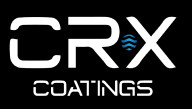Bio Graphene Solutions announces successful graphene-enhanced concrete trial
Bio Graphene Solutions (BGS) has shared results of a successful trial with "one of North America’s premier precast concrete manufacturers", which reportedly saw a significant material improvement and cost savings using the BGS patent-pending organic graphene admixture.
Looking to reduce its cement content by 10%, the manufacturer ultimately saw an overall admixture cost reduction of 47% as it eliminated the need for a lubricating aid commonly used to improve concrete workability. Reducing cement is a goal for many manufacturers given its high cost both economically and environmentally (due to high carbon content). In addition to cost savings, the manufacturer is said to have observed that concrete strength tests exceeded expectations, withstanding 8,000 to 17,000 lbs of pressure without stress cracking/breaking, and that the new admixture provided 28 day strength at 43% above the requirement. In addition, there were no flowability or friction issues reported, and no significant sagging or workability noted. The results were said to have met or exceeded the manufacturer’s existing standard, while fitting seamlessly into their existing process.





